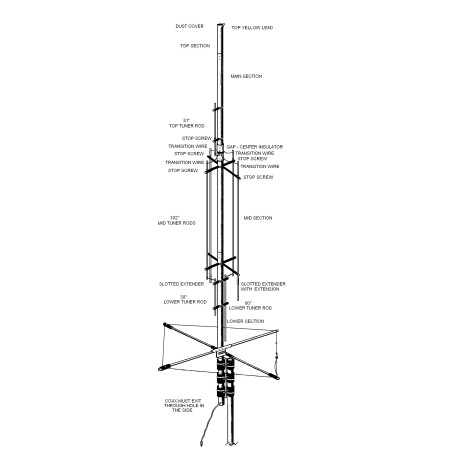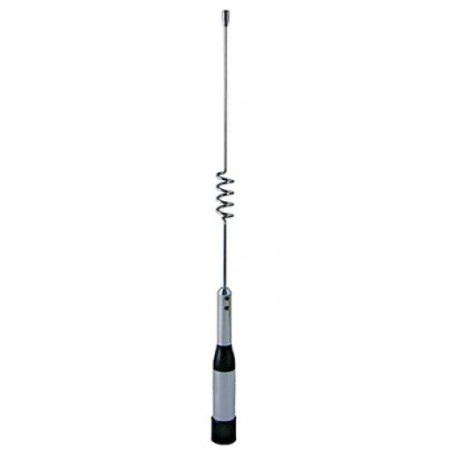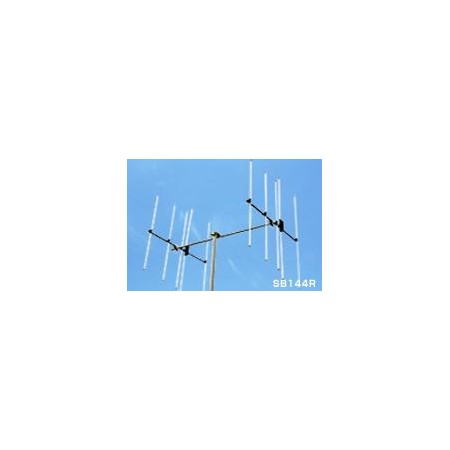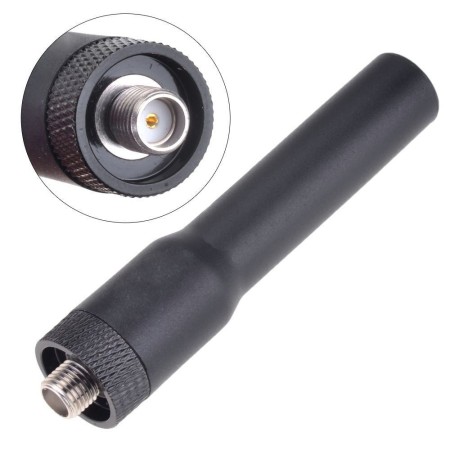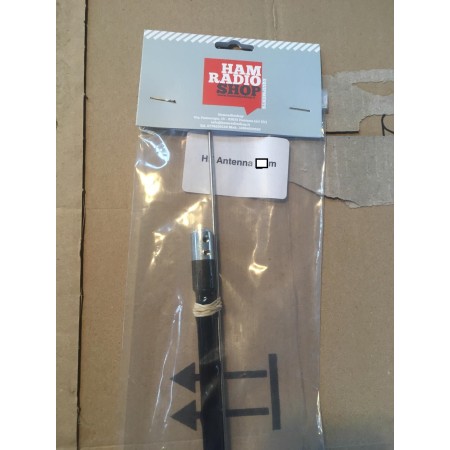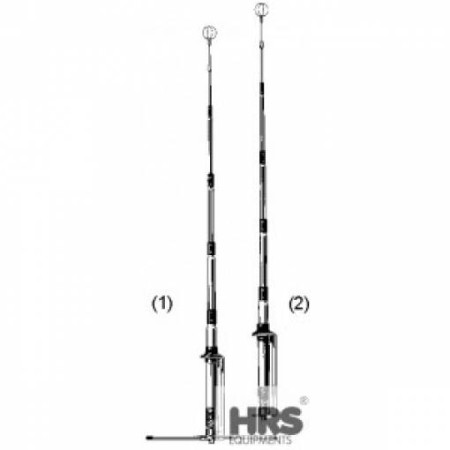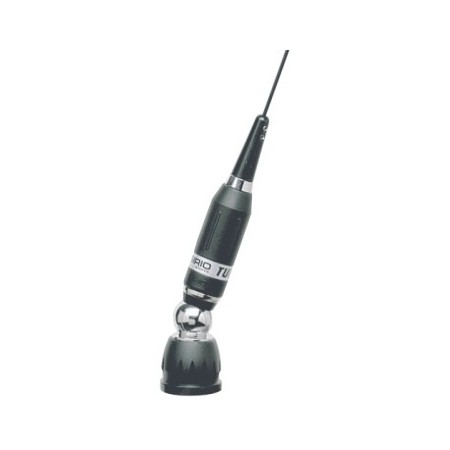- Out-of-Stock
GAP Titan DX - 8 band vertical antenna from 10 to 80 m. including WARCs
Ref: GAPTITANDX
Out-of-Stock Read the review
Read the review

TITAN RIGHT
The most recent antenna from the GAP family.
- All 8 bands from 10 to 80 m. including WARCs
- Length 7.5m
- Does not require radials!
One of the main features of the Titan GAp is the power supply
central. The Titan is the only vertical antenna with complete features
of 2:1 VSWR on the 10 to 40 m ranges. and 100KHz bandwidth on 80m.
Raising
the power point and ground losses decrease dramatically, which means
operation independent of ground conditions and can be installed
both on the roof and near the ground.
As with all other GAP antennas, no
any type of agreement is required.
The center frequency on 80 m.
is determined by a capacity setting. Please specify the
desired central frequency, at the time of order. The standard setup
It is 3.65 MHz, also available at 3.55 or 3.7 MHz.
The TITAN does not require
radials!
GAP - The shortwave antenna that has something different...
The GAP Verticals have something more...
The perfect antennas..?
A brief mention of the theory of vertical antennas:
A common vertical antenna
consists of a vertically mounted element fed to the base and a number
of concentric radials. In order to operate on multiple frequencies they are inserted
of 'traps' in appropriate positions which 'shorten' electrically
the quarter wave antenna.
Ok..but how is the power routed to the antenna?
Now suppose that the antenna is 8 meters high. For the 80 band the antenna
it would have to be 20 meters long to resonate at 1/4 λ. The 12 metres'
missing ' are replaced by 'traps'.The antenna is '
too short' and has a resistance of about 4 Ω or so. The 4 Ω
they represent the 'virtual resistance' that actually radiates energy
RF.
The antenna resistance, unfortunately, is not the only one
resistance of our system. The most important resistance is the
called 'soil loss'. It depends on the characteristics of the soil
and from the radials.
If, for example, 3 radials are used, the resistance is
of about 30 Ω. Our 'system' now consists of a resistor
of radiation of 4 Ω e and a series resistance of 30 Ω.Le
losses of the soil.. will heat it..!!! The system has a total of 34 Ω.
However, only 4 Ω will contribute to the radiation! So if there
radio has a power of 100 watts, only 12 watts will be radiated! If you consider
furthermore the power lost by the traps in the case of 'multiband' antennas
, with 2 Ω. only 11 wartts will actually be irradiated. The losses
of the land are the most significant losses in addition to those of the traps
.
Solution: Easy...use many more radials!!
Ok.... let's take 1000m
of cable and create 60 radials: this will reduce the resistance of the ground from
30 Ω to 4 Ω ; not bad, but nevertheless the radiated power will be
only 50 watts...so an even more effective action is needed!
Half the power... still heats the ground!
in order to drastically improve the performance of the antenna it is necessary to change technology.
GAP antennas raise the feed point. Advantages of the project a 'high' power point:
- Radiation resistance increases with increasing feed point.Ad at some point the radiation resistance will be 50 Ω - perfectly coupled with the power supply line.
- Elevating the power point also 'virtually' eliminates it ground losses.GAP antennas have a radiation existence of 50 Ω and only 5 Ω ground losses. Which means efficiency of 50%; relative to the previous example, 90 of the 100 will be irradiated watts. The point where the maximum current flows is at the center of the antenna rather than at the base. Result: the power is radiated instead of exerted dissipated into the ground.
- This increases the antenna gain for radiation angles low.
GAP antennas are characterized by high efficiency:
- no soil losses
- no leaks in traps or transformers
- The entire length of the antenna contributes to the radiation. The antennas 'trapped' contribute only a part of their extension mechanics to radiate power on the higher bands.
In GAP antennas there are no traps, no coils, no transformers.
5 good reasons not to use traps:
- if not well installed they can retain water.
- The coil part of the trap changes in value due to temperature excursions .
- a trap is an inductance with a capacitor that operates at a high voltage ; high voltages create electric arcs that easily ruin the trap.
- to work well, a trap must have a high Q; a high 'Q' has resulting in a narrow bandwidth.
- finally, as everyone knows, traps produce losses.
GAP antennas do not require 'agreements'.
There is absolutely nothing to '..agree'.... In fact we have to just mount the antenna on the roof... All GAP antennas are tuned in the factory.
GAP antennas have wide bandwidth.
With only a few
exceptions, GAP antennas cover all bands with an SWR<2:1.
Calm down - please.
Noise is an unwanted companion of 'verticals' - especially on the low bands. All GAPs are 'quiet'. They don't need to dozens and dozens of meters of 'radial' wires to eliminate AC noise.
GAP antennas install easily.
Screw nuts and bolts into the holes provided with the appropriate tools!
GAP antennas are built to 'last'
All 'weather sensitive' variables are important. There the winning key to guarantee reliability is simplicity of construction and the few overall components. Consider the component elements GAP antennas - aluminum tubes and coaxials. Nothing else! Compare it with other antennas with many connections, coils, variable capacities. transformers etc. and you will realize that every day, working in the rain, in the sun, I lie or snow - GAPs 'work'. GAP antennas use paired aluminum tubes Each telescopic section pairs perfectly and is fixed with screws small parts are made of stainless steel. The ust' coaxial is special for high temperatures to work safely even at high powers.
Data sheet
- Mpn
- TITAN DX
- Guy
- HF Verticali
- Compatible brand
- Generico
- Sub-Categories
- HF Verticali

![Offerprice [By Hamradioshop]](/img/logo-1719340723.jpg)






































































